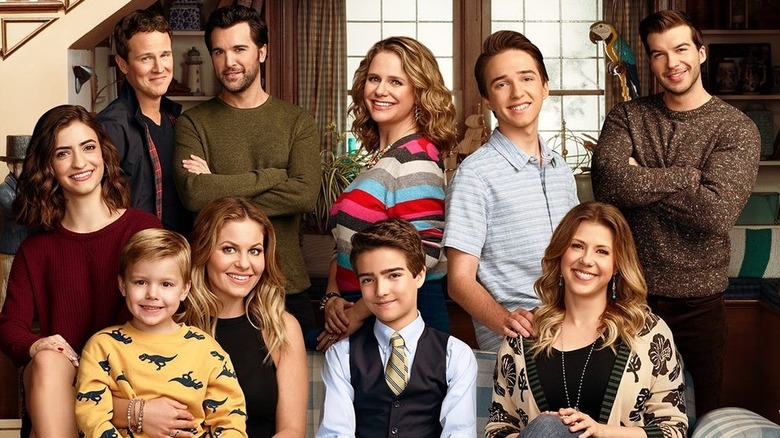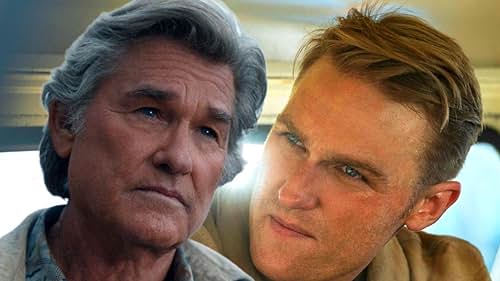Table of Contents
- The Power of Nostalgia
- “Beverly Hills, 90210” (1990-2000) and “90210” (2008-2013): A New Generation in the 90210 ZIP Code
- “Full House” (1987-1995) and “Fuller House” (2016-2020): A Return to the Tanner Family
- “Twin Peaks” was a groundbreaking mystery drama that pushed the boundaries of television storytelling. Its impact on the medium was profound and it continued to captivate audiences with its eerie atmosphere and enigmatic characters. In 2017, nearly three decades after its original run, “Twin Peaks
- The revival, helmed by creator David Lynch, continued the story of the town’s peculiar inhabitants while introducing new mysteries and surreal elements. “Twin Peaks
- The Reimagining of Classics
The 1990s were a transformative period in television history, marked by the emergence of iconic shows that continue to influence the entertainment industry today. Many of these ’90s TV shows have left a lasting legacy, not only through their original broadcasts but also through adaptations and remakes that reintroduce beloved stories to new generations. In this article, we’ll explore how these shows have transcended their original airings and found new life in various forms.
The 1990s were indeed a watershed moment in television, birthing a remarkable collection of shows that continue to shape the entertainment landscape to this day. What makes this era particularly remarkable is not just the impact of these shows during their original broadcasts but the enduring legacy they’ve crafted, evolving and adapting to suit the ever-changing tastes of audiences across different generations.
These ’90s TV classics hold a unique place in our hearts because they seamlessly blended innovation with relatability. Shows like “Friends,” “The Fresh Prince of Bel-Air,” and “The X-Files” introduced us to unforgettable characters and storylines that left an indelible mark. They captured the zeitgeist of the time while addressing universal themes that continue to resonate with viewers of all ages.
One of the most striking ways these ’90s TV shows have transcended their original airings is through adaptations and remakes. The enduring appeal of series like “Friends” has led to reunion specials that not only bring the original cast back together but also provide fans with fresh insights into the lives of their favorite characters years later. Such adaptations serve as a testament to the enduring power of nostalgia and the deep connection viewers have with these beloved shows.
Moreover, the influence of ’90s TV is evident in the wave of reboots and spin-offs that have breathed new life into iconic franchises. Shows like “Fuller House,” a sequel to the beloved “Full House,” and “The X-Files” revival brought back beloved characters and introduced them to new audiences, proving that the timeless appeal of these shows can bridge generational gaps.
Additionally, streaming platforms and digital media have provided a platform for ’90s TV shows to find new audiences. Younger viewers, who may not have experienced these shows during their original broadcasts, can now binge-watch them on-demand. This accessibility has sparked renewed interest in classics like “The Fresh Prince of Bel-Air” and “Buffy the Vampire Slayer,” introducing them to a new generation of fans.
These shows have also transcended their original formats through merchandise, podcasts and fan conventions. The cultural impact of ’90s TV is celebrated through collectibles, discussions and immersive fan experiences that keep the spirit of these shows alive and thriving.
In essence, the ’90s TV shows that have stood the test of time are a testament to the enduring power of storytelling and character-driven narratives. Their ability to adapt and resonate with new generations of viewers is a testament to their universal themes and timeless appeal. As we continue to cherish these shows, we can anticipate even more creative adaptations and tributes that will ensure their legacies live on for years to come.
You can also read more about this here: 50 Best Science Fiction TV Shows of All Time – Rolling Stone
The Power of Nostalgia
Nostalgia has always been a powerful force in entertainment and the ’90s are a prime source of nostalgia for a generation that grew up watching these shows. As millennials and Gen Xers revisit the television programs of their youth, there’s a sense of comfort and familiarity in reconnecting with characters and storylines that shaped their formative years.
Nostalgia has always been a powerful force in entertainment and the ’90s are a prime source of nostalgia for a generation that grew up watching these shows. As millennials and Gen Xers revisit the television programs of their youth, there’s a sense of comfort and familiarity in reconnecting with characters and storylines that shaped their formative years.
The ’90s were a defining era in pop culture and the television shows of that time played a significant role in shaping the cultural landscape. From the iconic fashion of “Friends” to the supernatural mysteries of “The X-Files,” these shows became more than just entertainment; they became a part of our shared cultural memory.
What makes ’90s TV shows so enduring is their ability to capture the essence of a particular time and place. They serve as a time capsule, transporting us back to an era when dial-up internet, cassette tapes and Blockbuster video rentals were the norm. Revisiting these shows allows us to relive the joys and challenges of growing up in the ’90s, from the highs of first crushes to the lows of navigating adolescence.
Moreover, the characters from ’90s TV shows often felt like friends and confidants to viewers. Whether it was the relatable struggles of the “Dawson’s Creek” gang or the hilarious misadventures of the “Fresh Prince of Bel-Air,” these characters became a part of our extended TV family. Reconnecting with them now evokes a sense of nostalgia that goes beyond mere entertainment—it’s a rekindling of old friendships.
The enduring popularity of ’90s TV shows has led to reboots, reunions and anniversary celebrations. Fans eagerly anticipate the return of their favorite characters and the chance to see how they’ve evolved over the years. It’s a testament to the deep emotional connection these shows forged with their audiences.
In a rapidly changing world, revisiting ’90s TV shows offers a comforting reminder of simpler times. It’s a chance to escape into a world where pagers and VHS tapes were cutting-edge technology and where the struggles of high school and young adulthood felt all too real. Nostalgia for the ’90s isn’t just a longing for the past; it’s a celebration of the enduring impact of these beloved shows on our lives and the enduring bonds they created between generations.
For a comprehensive look at this subject, we invite you to read more on this dedicated page: 50 Best Science Fiction TV Shows of All Time – Rolling Stone

“Beverly Hills, 90210” (1990-2000) and “90210” (2008-2013): A New Generation in the 90210 ZIP Code
“Beverly Hills, 90210” was an iconic teen drama that captured the essence of the ’90s. It explored the lives of affluent high school students in Beverly Hills, addressing relevant issues of the time. The show’s success prompted a reboot in 2008, simply titled “90210,” which followed a new generation of students at West Beverly Hills High School.
The reboot aimed to capture the spirit of the original while addressing the concerns and interests of a new era. While it didn’t reach the same level of cultural significance as its predecessor, it allowed a new generation to experience the allure of the 90210 ZIP code.
“Beverly Hills, 90210” was not just a television show; it was a cultural phenomenon that encapsulated the aspirations and challenges of a generation. This iconic teen drama served as a window into the lives of affluent high school students in the upscale Beverly Hills neighborhood, but it also ventured beyond the superficial façade of privilege to tackle the pressing issues of its time.
The original series, which aired from 1990 to 2000, addressed a wide range of topics relevant to the ’90s, including teen pregnancy, drug addiction, friendship and the search for identity. It struck a chord with viewers by blending the opulence of its characters’ lives with relatable coming-of-age struggles. “Beverly Hills, 90210” became a cultural touchstone for a generation, reflecting the desires, dreams and dilemmas of young people navigating the tumultuous waters of adolescence.
In 2008, nearly two decades after the original series concluded, “90210” emerged as a reboot, seeking to tap into the nostalgia and enduring appeal of the 90210 ZIP code. This new iteration of the show introduced a fresh generation of West Beverly Hills High School students, continuing the tradition of intertwining the personal lives of its characters with contemporary issues. While it didn’t achieve the same level of cultural significance as its predecessor, it did manage to carve out its own niche in the hearts of viewers.
“90210” strived to capture the essence of the original series while also addressing the concerns and interests of a new era. It tackled topics such as the impact of social media on teenage life, the evolving definition of success and the complexities of modern relationships. The show’s ability to balance the nostalgia of the past with the realities of the present allowed it to resonate with a new generation of viewers, some of whom may have grown up watching the original series alongside their parents.
While “90210” may not have reached the iconic status of “Beverly Hills, 90210,” it served as a bridge between two generations, allowing a new crop of viewers to experience the allure of the 90210 lifestyle. It highlighted the enduring appeal of storytelling centered around the trials and tribulations of high school life, even as the landscape of television continued to evolve. Ultimately, both iterations of the series played a significant role in shaping the way we perceive the teenage experience on television and the enduring impact of iconic shows on the collective cultural memory.
For additional details, consider exploring the related content available here 40 Best Teen TV Shows Ever Created — High School TV Shows

“Full House” (1987-1995) and “Fuller House” (2016-2020): A Return to the Tanner Family
“Full House” was a beloved family sitcom of the ’80s and ’90s and its sequel series, “Fuller House,” was a prime example of how ’90s TV shows continue to resonate with audiences. “Fuller House” brought back many of the original cast members to follow the adult lives of the Tanner family’s next generation.
The show’s success was largely due to its ability to balance nostalgia with fresh storytelling. It revisited familiar characters and catchphrases while addressing contemporary family dynamics and issues. “Fuller House” allowed fans of the original to share their beloved show with a new generation of viewers.
“Full House” was an iconic family sitcom that captured the hearts of viewers throughout the ’80s and ’90s. Its enduring popularity was a testament to its ability to depict relatable family dynamics and heartfelt life lessons. However, the show’s legacy didn’t end with its original run; it found a new lease on life with the sequel series, “Fuller House.”
“Fuller House” was a prime example of how ’90s TV shows continue to resonate with audiences across generations. It skillfully blended elements of nostalgia with fresh storytelling to create a viewing experience that appealed to both longtime fans and new viewers alike. By bringing back many of the original cast members, the show allowed fans to reconnect with beloved characters and catchphrases, evoking a sense of warmth and nostalgia that felt like a reunion with old friends.
Yet, “Fuller House” didn’t rest solely on nostalgia. It demonstrated its commitment to staying relevant by addressing contemporary family dynamics and issues. The show acknowledged the passage of time, portraying the next generation of the Tanner family as they navigated the challenges and joys of modern life. This approach allowed it to connect with a new generation of viewers who could relate to the characters’ experiences and trials, making it more than just a nostalgic trip down memory lane.
One of the strengths of “Fuller House” was its ability to tackle important themes and lessons while maintaining a lighthearted and entertaining tone. It continued the tradition of imparting valuable life lessons, much like its predecessor, reinforcing the importance of family, friendship and understanding in a world that often feels fast-paced and ever-changing.
By seamlessly blending the familiar with the contemporary, “Fuller House” became a bridge between generations. It allowed fans of the original series to share their beloved show with their children and grandchildren, fostering a sense of shared enjoyment and connection across the years. In doing so, it solidified its place in the hearts of viewers and showcased the enduring appeal of family-centric storytelling that transcends time.
In conclusion, “Fuller House” was a heartwarming continuation of a beloved ’90s TV show that managed to capture the essence of the original while embracing the realities of a new era. Its ability to balance nostalgia with fresh storytelling and its commitment to addressing modern family dynamics ensured that it remained a cherished part of television history, proving that the lessons and laughter of the Tanner family were timeless and universal.
If you’d like to dive deeper into this subject, there’s more to discover on this page: Untitled

“Twin Peaks” was a groundbreaking mystery drama that pushed the boundaries of television storytelling. Its impact on the medium was profound and it continued to captivate audiences with its eerie atmosphere and enigmatic characters. In 2017, nearly three decades after its original run, “Twin Peaks
The Return” brought the series back to life.
“The Return” breathed new life into the series, rekindling the flames of anticipation and nostalgia that had smoldered for years. It was a long-awaited revival that transported fans back to the familiar, yet mysteriously surreal, world they had cherished. The return of beloved characters and the resumption of enigmatic storylines ignited a fervor of excitement and speculation among viewers.
What made “The Return” particularly enthralling was its seamless blending of the past and the present. It honored the iconic elements that fans had cherished, while also charting a bold and uncharted narrative course. The series, like its characters, had matured over time and this evolution was palpable in its storytelling, visuals and themes.
For fans who had followed the series since its inception, “The Return” felt like a heartfelt reunion with old friends. The passage of time was etched on the faces of the characters, but their essence remained intact. The return of familiar faces, including Dale Cooper, Laura Palmer and the eerie denizens of Twin Peaks, brought both comfort and intrigue, as viewers eagerly sought to uncover the mysteries that had endured for decades.
“The Return” was not content with merely retracing the footsteps of its past; it was an exploration of the unknown, a journey into uncharted territory. The narrative threads wove a tapestry of surrealism, metaphysical exploration and Lynchian dreamscapes. It challenged viewers to embrace ambiguity and complexity, as the enigmatic David Lynch invited them to traverse the corridors of his unique imagination.
Throughout its run, “The Return” retained its distinctive Lynchian aesthetic, which was a visual and auditory feast for the senses. The hauntingly beautiful landscapes of Twin Peaks, the ethereal score by Angelo Badalamenti and the peculiar imagery that seemed to straddle the line between the ordinary and the extraordinary all contributed to the series’ enduring allure.
As “The Return” reached its enigmatic conclusion, it left viewers with more questions than answers, inviting them to engage in discussions, theories and analysis. It was a testament to the enduring power of storytelling that challenges convention and refuses to provide easy resolutions.
In retrospect, “The Return” stands as a testament to the enduring legacy of “Twin Peaks” and the creative genius of David Lynch and Mark Frost. It demonstrated that even after a long hiatus, a series can return to captivate audiences, challenge their perceptions and remind them of the limitless possibilities of storytelling. For fans, it was a surreal and unforgettable journey back to Twin Peaks, a place where the line between reality and dreams blurs and the mysteries of existence are both unsettling and beguiling.
For a comprehensive look at this subject, we invite you to read more on this dedicated page: Gravity Falls (TV Series 2012–2016) – News – IMDb

The revival, helmed by creator David Lynch, continued the story of the town’s peculiar inhabitants while introducing new mysteries and surreal elements. “Twin Peaks
The Return” served as both a sequel and a commentary on the passage of time and the evolution of television storytelling.
“The Return” was not just a sequel; it was a profound commentary on the passage of time and the ever-evolving landscape of television storytelling. As it revisited the enigmatic world of Twin Peaks and its eccentric characters, it also delved into the complexities of storytelling itself.
Time as a Character: In “The Return,” time became a character in its own right. The 25-year gap between the original series and this revival allowed the narrative to explore how time had transformed the characters and the town of Twin Peaks. The aging of beloved characters like Dale Cooper and the haunting presence of the past underscored the show’s deep meditation on the nature of time.
A Meta Commentary: David Lynch, the show’s creator, has always been known for his penchant for meta-commentary and surrealism. “The Return” was no exception. It questioned the conventions of television storytelling, often subverting expectations and challenging viewers to think beyond traditional narrative structures. It was a bold exploration of storytelling possibilities in the modern age.
The Influence of Technology: The evolution of technology since the original series was also a theme. The show depicted the ways in which technology had infiltrated our lives, from the omnipresence of smartphones to the eerie hum of electrical wires. It raised questions about the impact of technology on our perception of reality and the blurred lines between the digital and the tangible.
A Multifaceted Storytelling Experience: “The Return” wasn’t just a TV series; it was an immersive storytelling experience. Lynch employed unconventional techniques, including long, contemplative shots and dreamlike sequences, to craft a narrative that defied easy categorization. It required viewers to actively engage with the story, inviting interpretation and discussion.
A Reflection of Our Times: Beyond its own narrative, “The Return” mirrored the uncertainty and complexity of the contemporary world. It explored themes of duality, identity and the search for meaning in an increasingly chaotic and fragmented society. In doing so, it held up a mirror to our own struggles and questions.
In essence, “The Return” was a triumphant return not just to the world of Twin Peaks but to the very essence of storytelling itself. It challenged conventions, embraced the passage of time and invited viewers on a journey that was as enigmatic as it was thought-provoking. It exemplified the power of television to be a medium for profound reflection and artistic expression, reminding us that great storytelling can transcend the boundaries of time and genre.
Additionally, you can find further information on this topic by visiting this page: Notable Deaths in 2021

The Reimagining of Classics
The success of adaptations and remakes of ’90s TV shows reflects the enduring appeal of the original content. It also showcases the adaptability of these stories in different cultural and technological contexts. While some adaptations aim to recapture the nostalgia of the original, others take creative liberties to reimagine the source material for a contemporary audience.
The success of adaptations and remakes of ’90s TV shows reflects the enduring appeal of the original content. It also showcases the adaptability of these stories in different cultural and technological contexts. While some adaptations aim to recapture the nostalgia of the original, others take creative liberties to reimagine the source material for a contemporary audience.
The enduring appeal of ’90s TV shows is a testament to the quality of storytelling and the memorable characters that defined that era. These shows often touched on universal themes such as friendship, family, love and personal growth, making them relatable to audiences of all generations. When adaptations and remakes emerge, they tap into the nostalgic feelings that viewers have for the original series, offering a chance to revisit beloved characters and storylines.
However, what sets apart successful adaptations is their ability to adapt and evolve with the times. The world has changed significantly since the ’90s and new generations of viewers have different expectations and perspectives. Some adaptations wisely choose to update the setting, technology and social dynamics to resonate with a contemporary audience while staying true to the essence of the original.
Conversely, other adaptations take creative risks by reimagining the source material in entirely new ways. They may experiment with different genres, settings or character dynamics while preserving the core themes or spirit of the original. These adaptations challenge both longtime fans and newcomers, offering a fresh take on familiar stories that can be equally compelling.
Ultimately, the success of adaptations and remakes hinges on striking a balance between nostalgia and innovation. While nostalgia draws in fans of the original, innovation keeps the stories relevant and appealing to new audiences. When done well, these adaptations honor the legacy of ’90s TV shows while paving the way for a new generation of fans to enjoy the timeless storytelling that made the originals so beloved.
Explore this link for a more extensive examination of the topic: Robin Tunney – News – IMDb

In conclusion, the ’90s left an indelible mark on television and the legacy of its shows lives on through adaptations and remakes. These revivals allow both longtime fans and new viewers to experience the magic of ’90s TV in fresh and exciting ways, proving that great stories are timeless and can find new life across generations.
The influence of the ’90s on television remains a powerful and enduring force and the resurgence of ’90s TV shows through adaptations and remakes is a testament to their timeless appeal. Let’s delve deeper into why these revivals continue to captivate audiences:
1. Nostalgia and Fond Memories: The ’90s were a formative era for many viewers and the TV shows from that time hold a special place in their hearts. These revivals tap into the nostalgia of the original series, allowing fans to reconnect with beloved characters and relive cherished moments.
2. New Audiences: While ’90s TV shows were adored by a generation of viewers who grew up with them, these revivals introduce these classic stories to a new generation. Parents and older siblings can share their favorite shows with younger family members, creating a sense of continuity and shared cultural experiences.
3. Updating for Modern Times: Revivals often reimagine classic shows to reflect the contemporary world. They address current issues, technology and societal changes while preserving the core essence of the original series. This adaptation to modern times makes the shows relevant and relatable to today’s viewers.
4. Character Development: In many revivals, characters from the ’90s have evolved and matured, offering a fresh perspective on their journeys. This character growth adds depth and complexity to the storytelling, allowing fans to see how their favorite characters have changed over time.
5. Revisiting Unfinished Stories: Some ’90s shows ended prematurely or left unresolved storylines. Revivals offer the opportunity to revisit these stories, provide closure and answer lingering questions. This is especially satisfying for fans who have been waiting for years to see how these narratives conclude.
6. Exploring New Narratives: In addition to revisiting familiar stories, revivals sometimes introduce entirely new storylines and characters while keeping the spirit of the original intact. This approach allows for creative expansion and exploration within the established universe.
7. Celebrating Cultural Impact: ’90s TV shows often had a significant cultural impact, shaping fashion, music and popular references. Revivals celebrate this cultural influence, paying homage to the era’s trends and pop culture references while also modernizing them for a new audience.
8. Connecting Generations: These revivals bridge generational gaps, creating opportunities for families to bond over shared interests. Parents can introduce their children to the shows they grew up with, fostering connections and conversations about the cultural differences and similarities between the ’90s and today.
9. Proving Timelessness: The continued success of ’90s TV show revivals underscores the timelessness of great storytelling. It reaffirms that well-crafted narratives, relatable characters and memorable moments have a universal appeal that transcends generations.
In conclusion, the resurgence of ’90s TV shows through adaptations and remakes highlights their enduring impact and relevance. These revivals offer a unique blend of nostalgia, fresh perspectives and contemporary relevance, making them a joy for both longtime fans and new viewers alike. They stand as a testament to the enduring power of storytelling and the lasting cultural influence of the ’90s on television.
If you’d like to dive deeper into this subject, there’s more to discover on this page: What Matters to Student Success: A Review of the Literature
More links
For additional details, consider exploring the related content available here Stephen King: A guide to his horror, his history, and his legacy – Vox
